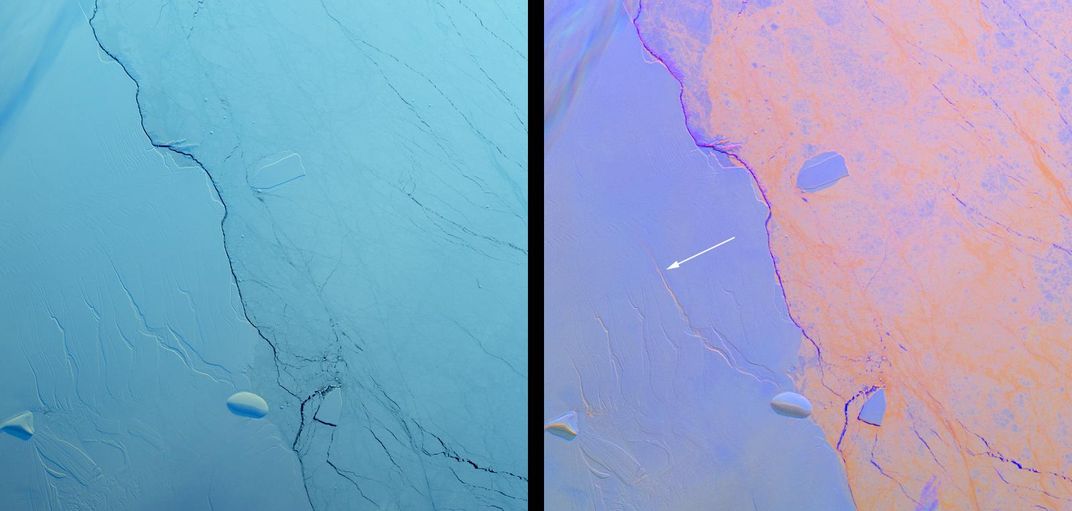Delaware-Sized Iceberg Breaks Off Antarctica
‘Whopper’ of an iceberg weighs more than one trillion metric tons—and has been threatening to make the break for years
/https://tf-cmsv2-smithsonianmag-media.s3.amazonaws.com/filer/b2/7b/b27be253-719d-481e-ab26-b2feb09d44cc/larsenc_photo_2016315_lrg.jpg)
A Delaware-sized iceberg has broken off of Antarctica, scientists confirmed today.
“We have been anticipating this event for months, and have been surprised how long it took for the rift to break through the final few kilometers of ice,” Adrian Luckman, glaciologist at Swansea University, tells Danica Kirka of the Associated press.
Since 2014, scientists have tracked the 2,300-square-mile iceberg, which weighs more than one trillion metric tons, as it slowly broke away from the shelf on the eastern coast of the Antarctic Peninsula. By late last week, only three miles of the roughly 120-mile-long crack were actually still attached to the Larsen ice shelf.
"Put any adjective you like on it: a corker, a whopper — it's a really large iceberg," Antarctic researcher Anna Hogg tells Geoff Brumfiel of NPR.
As Smithsonian.com reported earlier this year, this is the third section of the Larsen ice shelf to collapse in the last few decades. The first, dubbed Larsen A, broke free in 1995. The second, Larson B, soon followed with its collapse in 2002. The latest to make the break, a section of Larsen C, is now one of the largest icebergs ever recorded.
While large, Brumfiel reports, this departing iceberg won't affect sea levels since the ice was already floating on water. "This is the same as if you've got an ice cube in your gin and tonic," Hogg tells Brumfiel. "When the ice cube melts, it doesn't raise the volume of water in that glass."

But the collapse of this third section could also portend worse things to come for the ice shelf, write Jugal K. Patel and Justin Gillis for The New York Times. The edge of what's left of Larsen C is now much closer to a boundary called the "compressive arch," where the force of the ice flowing toward the ocean is redistributed, keeping the entire structure in place. If the ice shelf shrinks past that line, according to the New York Times, the ice shelf could collapse in a matter of months.
In addition, similar ice shelves across Antarctic are holding back significant amounts of land-based ice, which has the potential to substantially raise sea levels if it fell into the oceans.
Scientists caution that the cause of this latest ice shelf breakup still isn't clear, the Associated Press reports. Though some argue human-induced warming has had a hand in the disintegrating ice shelf, others dispute the idea. “At this point it would be premature to say that this was caused by global warming,” Hogg tells Kirka.
This latest break continues a troubling trend on the rapidly warming Antarctic Peninsula, which has radically reshaped Antarctica. “This is a big change," Luckman tells Patel and Gillis. "Maps will need to be redrawn.”